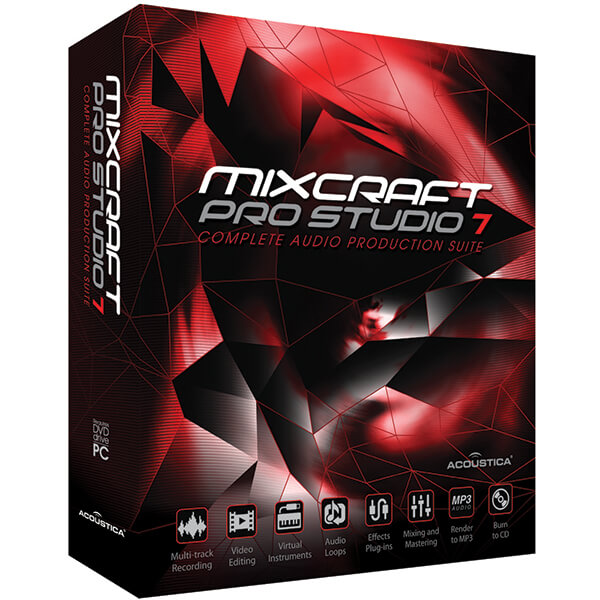Mixcraft Pro Studio 7 DAW REVIEW
PROS: Excellent documentation, easy setup and usability, ultra-affordable, tons of extras and compatibility.
CONS: Windows-only.
PRICE: $165
It’s come to our attention that Mixcraft is making huge strides in the education market, and it’s no wonder. Upon opening up the box (yep, an actual box!) we were overjoyed to see a phonebook-sized manual. Imagine that – a complex piece of software that actually comes with instructions on how to use it! I know, I was unprepared, as well. But now it makes sense that so many schools and teachers choose to arm budding engineers with this DAW, because there’s an immense amount of help and guidance provided in the excellent user manual. It’s written in a very conversational tone, so your eyes aren’t rolling around trying to make heads-or-tails of endless techno-babble. No, it actually immerses you in the software and MAKES you want to use its features. Smart move, guys. We learned about a ton of useful features (and were able to easily load our 3rd-party VST fx) with a quick thumbing of the pages.
So, how’s the DAW? In a phrase, it may well be the best budget software any band or project studio can invest in. SONAR better make some impressive moves in 2016 if they hope to keep pace with the Windows market.
If you’re tired of the limitations of the freeware your computer came with, and want something more serious without laying down a fortune (or spreading that fortune out over the rest of your waking days due to the new ‘subscription’ phenomena sweeping the market), then Mixcraft was made for you.
Setup was a breeze, connecting our MIDI controllers and USB interfaces with external mic pre’s was a snap. In fact, we were waiting for problems, and couldn’t even force them to occur. The piano roll layout was perfect for editing MIDI data from our keyboard controller, the mixing window is laid out in a familiar channel-strip config, so you can tweak until your mouse (or Mackie Control Surface) is content. MIDI and audio live comfortably together on-screen, so we could add trippy synth textures to a bass we recorded direct through a Hi-Z input on our interface, all on top of beats we made in the step sequencer. No latency, which is always a huge concern for us when tracking in a new environment.
The good folks at Acoustica hipped us to the Performance Panel, too, which we demo’d in a simulated live setting by triggering MIDI beats and then manipulating the settings using our controller. So you can use it as a ridiculously feature-heavy (but never intimidating) DAW, but also for stage use if you’re in the electronic world. Very cool.
Lastly, it bears mentioning that Mixcraft Pro Studio 7 comes with an insane amount of extras for the price. We tracked for a few weeks and couldn’t even get into them all. But we did end up tapping into the loops and drum samples (hundreds to choose from), virtual synths and organs, reverb, compressors, chorus, etc…Heck, it even comes with iZotope’s Mastering Essentials to complete your mix. For $165, are you serious?
In the end, we can’t recommend Mixcraft 7 enough. The only downside we can think of is it’s Windows-only, but for those in the PC World, it’s a no brainer. Mac users, time to fire up Boot Camp.

